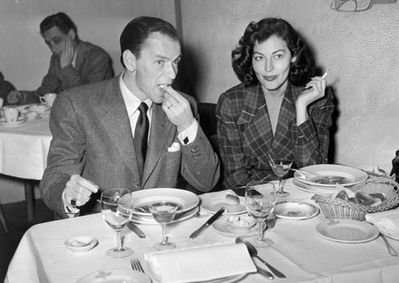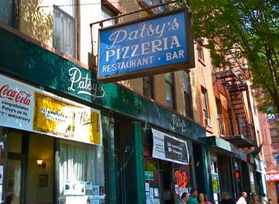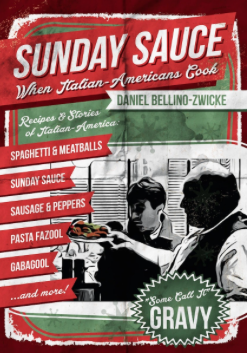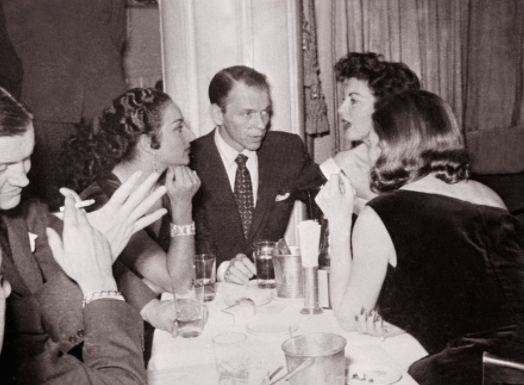"FRANK"
GET a FINE ART PRINT
FRANK SINATRA
From FINE ART AMERICA
IT MAKES a MOST WONDERFUL GIFT
A Young Frank Sinatra .... Hoboken, New Jersey
.
Frank Sinatra
"Come Fly with Me" !!!
.
PATSY'S "Franks Favorite Restaurant"
Frank's Favorite Restaurant in The World, was Patsy's on West 56th Street in New York, in The Theater District near Times Square .. Frank's Favorites were; Calms Posillipo, Spaghetti Pomodoro, Veal Milanes (extra Thin & Crispy) and Spaghetti & Meatballs of which patsy's makes The Best in The City ..
PATSY'S is by far the restaurant most associated with SINATRA -- on its website, the restaurant notes that it "has been known for years as the restaurant Frank Sinatra made famous." You can still order up old-school Italian there, but you might not have the exact same experience as Sinatra, who was said to have entered through a special door to sit at a reserved table on the second floor. Sinatra became especially loyal to the restaurant after making a solo Thanksgiving reservation one year, not realizing the restaurant was slated to be closed that day. Patsy Scognamillo didn't want to turn Sinatra away, so he allowed the reservation. He also didn't want Sinatra to know the restaurant was opened just for him -- so he had the entire staff bring their families to fill the place up, something Sinatra didn't learn until years later, according to Patsy's lore. The restaurant still celebrates its connection to Sinatra: At right, in 2002, Joe Scognamillo served actor Bill Boggs, who had dressed up as Sinatra . (236 West 56th St.) .
.
FRANK & AVA GARDNER
The SINATRA COOKBOOK
SINATRA SAUCE
The COOKBOOK
COOK & EAT LIKE FRANK
His FAVORITE ITALIAN RECIPES
FRANK & DEAN

FRANK'S FAVORITE ITALIAN BREAD
PARISI BAKERY MOTT STREET
LITTLE ITALY, NY NY
.
FRANK'S FAVORITE PIZZA "PATYSY'S"
FRANKS FAVORITE PIZZA
PATSY'S in EAST HARLEM
No Relation to PATSY'S on 56th STREET
SINATRA at JILLY'S New York with Friends and Daughters NANCY and TINA
Frank loved going to his close Pal JILLY RIZZO'S New York Restaurant JILLY'S where Frank would eat Chinese Food, tell stories, and drink JACK DANIEL'S to the Wee Hours of the morning
Despite having served as an icon for high living for generations, Frank Sinatra was not a fan of haute cuisine. A high school drop-out from Hoboken, New Jersey, the only child of a father who was a lightweight boxer turned fireman and a political activist mother who ran an illegal abortion business that provided services for free, Sinatra even after his fame was established preferred simpler fare and cozier surroundings than were found in the five-star restaurants of the world. In New York he favored only a few establishments, none of them popular celebrity hang-outs (except for the celebrities invited by Frank). There was P.J. Clarke’s at 915 Third Ave., where Sinatra carefully scheduled his nights around those of gossip columnist Dorothy Kilgallen, whose favorite topic was anything going wrong in Sinatra’s life, especially if it concerned the disillusion of his relationship with actress Ava Gardner. Then there was PATSY'S at 236 W. 56th St., where Frank ordered the breaded veal and spaghetti with red sauce on the side. As a story goes, Sinatra found himself on the skids one Thanksgiving, without company and without plans. So he made a reservation at Patsy’s, which wasn’t open that day. But owner Pasquale Scognamillo scrambled his staff and family so that when Frank rolled in at 3pm, the place was full. Rocky Lee Chu-Cho Bianco at 987 Second Ave was where Frank would go for pizza, and if he wanted something a little more upscale, he hit the 21 CLUB over at 21 W. 52nd St., where the jacket and tie dress code was a lot less of an issue in the 1950s than it is now.
But above and beyond them all was his affection for Jilly’s Saloon. Born Ermenigildo Rizzo on May 6th, 1917, Jilly’s career in food services started early, when he worked for his father delivering Italian ice to cafés. He opened his first restaurant, JILLY'S SALOON , on West 49th Street but eventually moved it to a new location on West 52nd. It was this second incarnation of Jilly’s that attracted Sinatra’s attention. On any given night, Sinatra could be found at his regular booth surrounded by regular friends who received the call earlier in the day — having grown up an only child, Sinatra swore he would never dine alone. Jilly’s kitchen specialized not in Italian fare but in Cantonese food. Sinatra spent so much time there that Jilly Rizzo became Sinatra’s closest friend, his right-hand man, and his bodyguard.
Learn How to Make SINATRA SUNDAY SAUCE and MEATBALLS

Frank Sinatra with Jilly Rizzo and JACKIE "O"
By 1962 he and Jilly Rizzo were so close that Sinatra was securing bit parts for the saloon owner in films like The Manchurian Candidate. That same year, Sinatra and fellow Rat Packer Sammy Davis Jr. recorded the duet “Me and My Shadow,” which twice mentions ending up at Jilly’s. In Sinatra’s 1968 detective movie Lady in Cement, he pays tribute to his friend by naming a seedy Miami strip club Jilly’s. Also in 1968, Sinatra once again paid musical tribute to his favorite hang-out when, in the song “Star,” he crooned “If they’ve got a drink with her name in Jilly’s bar, the chances are the lady’s a star.”
Apart from being Sinatra’s throne room, Jilly’s was most famous as the spot where mobsters decided to murder television comedian Johnny Carson.






























